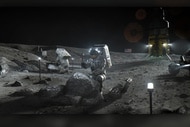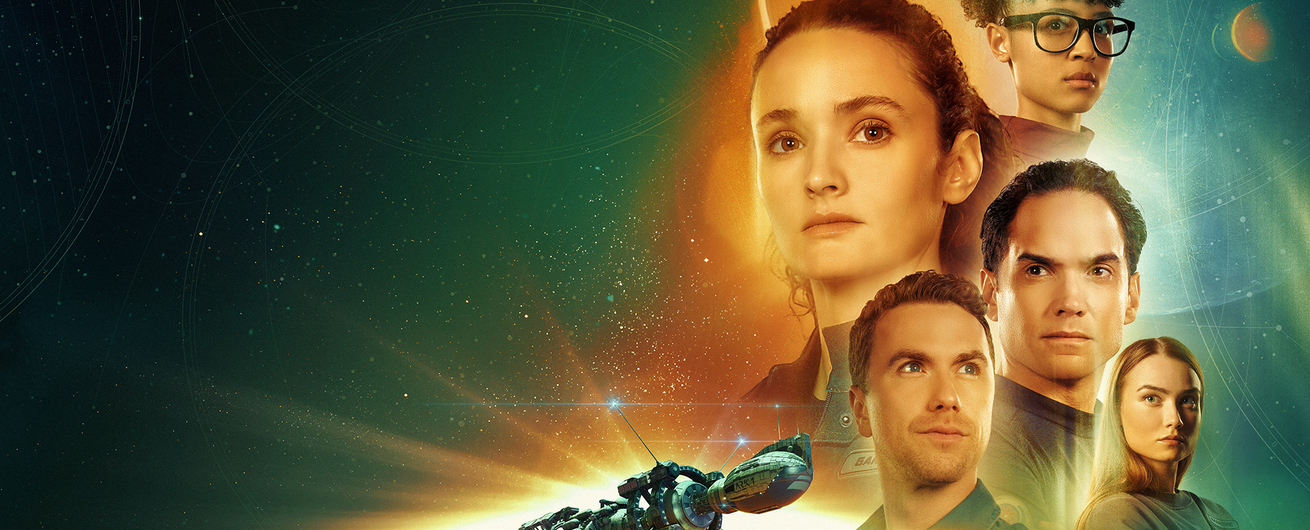Create a free profile to get unlimited access to exclusive videos, sweepstakes, and more!
Everything You Need to Know About the International Space Station
All your burning ISS questions answered!
The International Space Station (ISS) is an orbiting science laboratory, the largest and longest-running crewed spacecraft in history. It was built one piece at a time here on Earth and assembled in space through the collaboration of several space agencies and nations around the world.
The ISS provides a platform for astronauts to learn about living and working in space, a place to study our planet from a distance, and a place to perform science that can’t be done inside the influence of Earth’s gravity. It’s a project decades in the making, and it has been continually inhabited since November 2000, meaning that there have been at least a couple of people in space at any given time for more than 20 years.
It is arguably the coolest thing we have ever done and it illustrates what our species is capable of when we put aside national or cultural differences in favor of the collective good. If we ever hope to spread out into the cosmos, like the crew of SYFY’s The Ark (returning for Season 2 this July), the success of the ISS provides the road map. Read on to learn the answers to some of the most common questions about humanity’s raddest spaceship.
For More on the International Space Station:
Space Station Crew Captures Stunning View of the Eclipse from Space
A Florida Home May Have Been Hit by Debris from Space
With Help from a Robot, a Surgeon on Earth Performs Simulated Surgery on the ISS
How Far Up Is the International Space Station?
The boundary of space is a matter of some debate, but the Kármán line is generally accepted as the cutoff, at a distance of 62 miles (100 kilometers) above the surface. Most satellites orbit between 100 miles (160 kilometers) and 1,200 miles (2,000 kilometers), in a region known as low-Earth orbit.
That’s where the ISS lives, at an average orbital distance of 250 miles (400 kilometers) above the surface of the planet. At that distance, it orbits at more than 17,000 miles per hour, circling the globe approximately every 90 minutes.
Who Is on the International Space Station Right Now?
Today, there are nine people aboard the ISS. The Expedition 71 crew was already there, having begun their mission April 5, 2024. Expedition 71 includes NASA astronauts Michael Barratt, Matt Dominick, Tracy Dyson and Jeanette Epps, and Russian cosmonauts Nikolai Chub, Alexander Grebenkin and Oleg Kononenko.
They are joined by Suni Williams and Butch Wilmore, the crew of Boeing’s Starliner Crew Flight Test. Typically, the station can accommodate a crew of seven, plus visitors. The nine people aboard the station right now makes it a full house, but there are plenty of supplies, and ‘nauts are accustomed to cramped quarters.
How Old Is the International Space Station?
The first piece of the International Space Station, the Russian Zarya module, was launched in 1998, followed quickly by the United States’ Unite module two weeks later. Additional pieces were added over the next two years before the first crew arrived in November 2000.
Construction continued through 2011 and the retirement of the Space Shuttle, and continues to a lesser degree today. Upgrades and new equipment continue to be delivered, enhancing the station’s capabilities and making life there a little more comfortable.
NASA has committed to using the station through 2030, after which it will be allowed to fall into the atmosphere and burn up over the Pacific. The ultimate fate of the station lies in the planet’s spaceship graveyard at Point Nemo.
How Big Is the International Space Station?
It’s big, especially for a spacecraft. The station stretches 354 feet (108 meters) wide, 243 feet (74 meters) long, and 148 feet (45 meters) high. The interior includes more than 35,000 cubic feet (1,005 cubic meters) of pressurized volume and a smaller 13,696 cubic feet (388 cubic meters) of habitable volume.
It’s roughly equivalent to a five-bedroom house and, if it were on Earth, it would weigh about a million pounds. With the trusses, solar arrays, and radiators, it extends to about the size of an American football field, including end zones. Those trusses provide support for the rest of the station, the solar arrays collect solar radiation and turn it into electricity, and the radiators manage the station’s temperature. It needs those radiators because the station exists in a near-vacuum where it’s difficult for heat to be carried away. The radiators pull heat out of the rest of the station and let it bleed out into space.
How Many Space Agencies and Nations Collaborate on the ISS?
The International Space Station is the result of cooperation and collaboration between five space agencies and 15 nations. Those space agencies are NASA, Roscosmos (Russia), ESA (European Space Agency), JAXA (Japanese Aerospace Exploration Agency), and CSA (Canadian Space Agency).
The 15 nations represented on the station are the USA, Russia, Japan, Canada, and 11 member nations from ESA: Belgium, Denmark, France, Germany, Italy, The Netherlands, Norway, Spain, Sweden, Switzerland, and the United Kingdom. To date, there have been 280 visitors to the station, from 23 countries.
Can You Tour the International Space Station?
Yes! At least, remotely. At this stage, the ISS has become a sprawling space-based science station composed of modules, nodes, airlocks, trusses, solar arrays, radiators, robotic arms, and more.
A tour of the ISS would take you through the Zarya module, Unity module, Zvezda Service Module, Destiny Laboratory Module, Harmony Module, Columbus Laboratory Module, Japanese Logistics Module, Japanese experiment Module Kibo, Poisk Mini-Research Module, Tranquility Module, the Cupola, Rassvet Mini-Research Module, Permanent Multipurpose Module, Bigelow Expandable Activity Module, and the Nauka Multipurpose Laboratory Module.
For a guided float-through, check out the above video tour of the station from Expedition 33 Commander Suni Williams, who is also on the station right now, as part of the Starliner Crew Test Flight.
Are There Live Streams of the Space Station?
There are two live streams beaming back to Earth from the International Space Station. The first (above) is from the External High Definition Camera (EHDC) mounted to the outside of the station. It provides real-time views of the Earth from orbit. Think of it as what the astronauts on the station might see when looking out of the Cupola’s windows.
The other (below) features various views of the station including external views and internal views when the crew is on duty. Each of them are available on YouTube as a continuous live stream with a rolling 12-hour recording of the last half-day. Importantly, both streams are subject to frequent disruptions occurring as a result of the harsh conditions in orbit.
They’re worth watching, both for the incredible views of our planet and for the window into what people are doing in space right now. Those station-bound astronauts spacewalk so that one day we can spacerun.
Season 2 of The Ark premieres on SYFY beginning Wednesday, July 17 at 10/9c. Catch up on the entirety of Season 1, streaming now on Peacock!



































